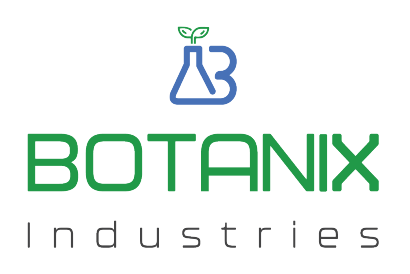Research & Development
Innovation that bridges nature and science
At Botanix Industries, research is not a department — it is the heart of our vision. Our dedicated R&D center, spread across 1,500 sq. ft., is home to a team of scientists, phytochemists, and innovators who work tirelessly to transform raw botanicals into standardized, high-efficacy. extracts trusted worldwide.
We invest heavily in next-generation extraction technologies, analytical characterization, and green innovation to ensure our products remain at the forefront of the global herbal industry. Every breakthrough at Botanix is designed to enhance purity, bioavailability, stability, and sustainability.
Our R&D Focus
1. Advanced Extraction Techniques
We deploy multiple extraction methods to preserve the integrity of bioactive molecules:
- Solvent Extraction– ethanol, methanol, or water for broad-spectrum isolation.
- Supercritical Fluid Extraction (SFE)– ideal for heat-sensitive compounds.
- Ultrasound- & Microwave-Assisted Extraction (UAE/MAE)– faster, higher-yield recovery.
- Hydro & Steam Distillation– specialized for essential oils.
👉 Outcome: Higher purity, optimized yields, and eco-friendly operations.
2. Analytical Characterization
Our scientists develop bioavailable, consumer-friendly formats, including:
- Capsules, powders, and liquid extracts.
- Nanoparticle & liposomal delivery systemsfor improved absorption.
3. Standardization
Every extract is standardized to reproducible biomarker levels, ensuring batch-to-batch consistency for global customers.
- Example markers: Curcumin (Turmeric), Bacosides (Bacopa), Withanolides (Ashwagandha).
4. Biological Evaluation
We validate extracts through:
- In vitro assays– antioxidant, antimicrobial, and anti-inflammatory activity.
- In vivo studies– pharmacokinetics and safety profiling.
- Clinical research– evidence-based validation for therapeutic claims.
5. Formulation Innovation
Our labs use cutting-edge instrumentation for phytochemical profiling and molecular validation:
- HPLC / UHPLC– quantitative marker analysis (Curcumin, Withanolides, Bacosides, etc.).
- GC-MS– volatile and solvent residue testing.
- FTIR, NMR, LC-MS– molecular fingerprinting and advanced structural analysis.
👉 Ensuring consistent potency, safety, and traceability.
6. Safety & Compliance
-
Every formulation undergoes toxicology studies and is screened for:
- Heavy metals
- Pesticides
- Microbial contamination
👉 Aligned with WHO-GMP, USP, and international pharmacopeia standards
Future-Ready Research Directions
Green Extraction Technologies–
enzyme-assisted and microwave-based eco-friendly methods.
Omics Approaches–
genomics, proteomics, and metabolomics for deeper insights.
AI & Machine Learning–
predictive modeling for formulations and bioavailability.
Regulatory Leadership–
compliance with GRAS, USP, BP, and EU standards for global markets.
